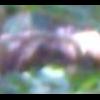For my inaugural on-topic post here on BFF, I figured I'd wade into this brier patch and give my 2 cents. There have been many arguments for and against the validity of the study in this thread alone, but two of the things that trouble me the most about Ketchum's report I haven't seen mentioned (and I read the whole 99 pages of posts but may have missed it if these points have been brought up.).
The first thing is the report states that:
...electron micrographs of the DNA isolated from these samples show patches of double- and single-stranded DNA intermixed.
This is extremely troubling to me as no known organism that I could find has DNA structure like this. The only thing I could find that had any single-stranded DNA were viruses. The best explanation for this odd occurrence I found was on the Ars Technica page.
This is what you might expect if two distantly related species had their DNA mixed—the protein-coding sequences would hybridize, and the intervening sections wouldn’t. All of this suggests modern human DNA intermingled with some other contaminant.
So in this case we either have contamination or an organism with a novel DNA structure. I found nothing in the report that would explain why this odd DNA structure is occurring, and for something as big as this (and I believe it is HUGE if accurate), there should be more than just an "Oh, by the way, the DNA looked funky." Crap, finding an organism with DNA that has both double- and single- stranded DNA intermixed is a whole paper in itself!
The other thing that bothers me is that all of the mtDNA tested in the study is identified as modern human. All of it. From the paper:
After extensive forensic controls to prevent contamination, mtDNA testing of the Sasquatch samples yielded fully modern human profiles. Sixteen haplotypes indicating 100% homology with modern human mtDNA sequences were observed from 20 completed whole and 10 partial mitochondrial genomes.
What troubles me is the number of different haplotypes identified. In order for all the halpotypes identified to be present in the BF population, then either multiple hybridization events had to occur or the mtDNA in the BF population underwent the exact same mutations as it did in the human population. I think the probability of the latter is extremely unlikely so I will not discuss that here. We are left with multiple hybridizations. So now not only was there the initial hybridization event occuring ~15,000 years ago, but there were at least 15 other events since then. And some of these haplotypes could only have arrived with the European colonization of the Americas (most of the haplotypes are "European or Middle Eastern in origin"), then most these hybridization events have happened within the last 1000 years or so. Under this scenario, I would have expected to see one, maybe two, haplotypes represented significantly more than the others. As far as I can tell, this was not the case.
Also, there was no non-human mtDNA reported. This would mean that every mtDNA donor was a direct descendant of one of these hybridization events. I would expect to see at least one sample whose maternal line was not a direct descendant of a human. Perhaps a larger sample size would reveal non-human mtDNA.
I really wanted this paper to provide compelling evidence that there is something undocumented roaming the woods in North America, but I don't think it did. My conclusion is that the paper as presented is flawed and does not support the conclusions it makes. Perhaps the full data set generated by Dr. Ketchum's work will provide evidence of a new hominin.
Please understand that I am NOT a gentisist by any means, but I do have a basic grasp of how DNA is inherited. I do expect some of y'all to poke holes in my conclusions and if you can make me understand what's going on better, I welcome it.
maelbearpig



